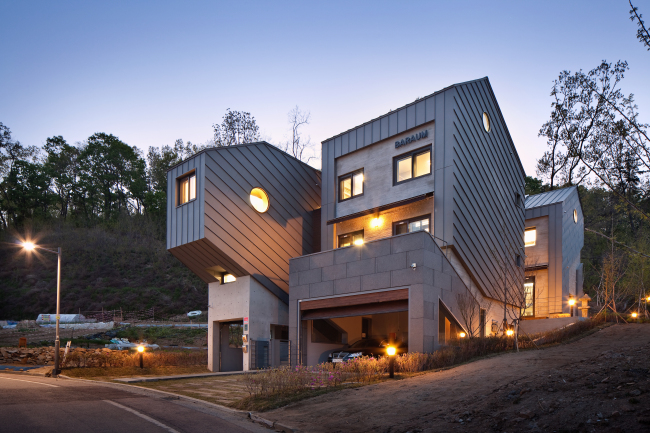Chun Mi-jin, 36, who lives in an apartment complex with more than 1,000 households in western Seoul, has recently teamed up with a friend to buy a house.
They bought a small, 30-year-old detached house with three bedrooms, located in Yeonhui-dong neighboring Yonsei University, for 550 million won ($499,600) to build a new home.
“My friend and I made the joint investment to achieve our long-awaited dream ― return to Yeonhui-dong where we grew up. We are going to demolish the old house and build a small-scale duplex with a shared garden,” she said.
“We are going to hire an architect to build two spilt-houses tailored to our own lifestyles. As a photographer, my friend will open a studio on the first floor of his new home, while my husband and I think a guest room is important.”
Like Chun, a growing number of Koreans, regardless of age, start looking for different housing options beyond a square box-shaped apartment, which has long been dominant in the nation’s housing market.
They define their home as space for their happy life rather than an investment tool.
 |
The night view of Baraum, the three-story detached house in Yongin, Gyeonggi Province, is one of the latest modern residential houses with unique and efficient design. The house, designed by architect Lee Ki-ok of Phillip Architects, won the Korea Architecture Award in 2013. (Phillip Architects) |
Behind this changing perception of homes in Korea is the declining popularity of housing investments and growing demand for quality of life, housing market experts said.
“My husband had thought of getting a low interest home loan to buy a more expensive apartment in an affluent district as an investment, but he dropped the idea this year as the long-term outlook for the housing market recovery looks bleak,” Chun said.
Chun and her husband are excited to design their dream home, reflecting their lifestyle and taste.
The “out of the box” thinking is creating new housing options, including small duplex houses in the suburbs and shared homes for city dwellers.
Most of these unique homes are blended with contemporary architecture and modern interiors.
There are some seeking traditional houses offering an authentic living experience.
Cho Jin-chul, a 36-year-old single man, moved into a hanok, Korea’s traditional one-story house, located in Seochon, or “west village.” Seochon, neighboring Gyeongbok Palace, has recently emerged as a tourist attraction for traditional houses in Seoul.
“Despite inconveniences compared to an apartment, I love the quiet and quaint atmosphere that my old hanok house with a beautiful small garden offers,” Cho said.
The alternative home-seeking trend inspires housing policy makers as well.
The Seoul City Government debuted the nation’s first cooperative housing complex in Gayang-dong, western Seoul, last month as an alternative housing option to a public rental apartment complex for low-income households.
The housing cooperative is different from supply-driven rental apartments in that residents initiate the concept of their home and work together to design the complex, reflecting shared interests of cooperative members. After the completion, they also co-work to keep it well managed.
“The city decided to introduce the housing cooperative as part of public home supply as we found the need for restoration of community spirit among citizens,” Seoul City Mayor Park won-soon said in an opening ceremony of the first housing cooperative.
The first housing cooperative in Gayang-dong was built for its 24 member households who have children under 3 years and common interest in raising them in a stable, safe and healthy environment.
The city government planned the first cooperative and attracted 24 member households from a bidding process to join the project. Then, it offered the land for the cooperative members and sponsored an architect for the project.
The city’s survey found that the majority of residents moving in the cooperative housing complex are satisfied that there is more shared space for their children.
“Another joyful experience comes from human interaction between cooperative members,” the survey said.
Based on the experience from the Gayang project, the city government said it would open two more housing cooperatives. One targets artists with no home and the other one is low-income people in their 20s.
“We see more dream-home projects nationwide as a growing number of Koreans realize where they live defines them,” architect Lee Ki-ok said.
By Seo Jee-yeon (
jyseo@heraldcorp.com)





![[Exclusive] Hyundai Mobis eyes closer ties with BYD](http://res.heraldm.com/phpwas/restmb_idxmake.php?idx=644&simg=/content/image/2024/11/25/20241125050044_0.jpg)
![[Herald Review] 'Gangnam B-Side' combines social realism with masterful suspense, performance](http://res.heraldm.com/phpwas/restmb_idxmake.php?idx=644&simg=/content/image/2024/11/25/20241125050072_0.jpg)

